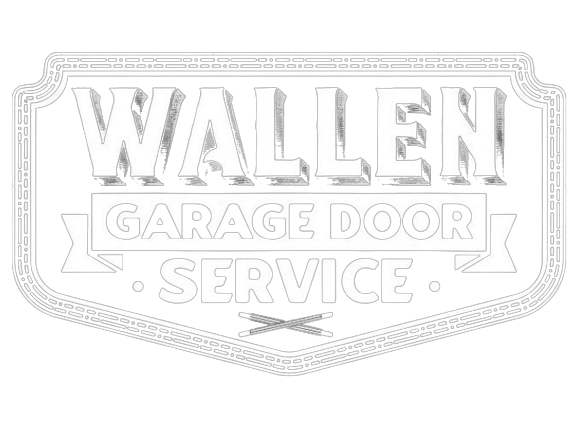When exploring the best types of garage door bottom seals, homeowners need to consider their specific needs to ensure optimal protection and efficiency. Garage door bottom seals are essential for keeping out weather, pests, and dust. They help maintain the cleanliness of your garage and improve energy efficiency by preventing drafts.
These seals are placed at the bottom of your garage door to close the gap between the door and the floor. Various materials like rubber, vinyl, and brush options are available, each suited to different conditions and preferences. This guide will help you understand the options available so you can choose the right seal for your home, ensuring your garage is well-protected and efficient.
Types of Garage Door Bottom Seals
Understanding the different types of garage door bottom seals can help homeowners choose the best option for their homes, ensuring effective protection and efficiency. Each type of seal offers unique benefits suited to various environmental conditions and specific needs.
Rubber Seals
Popular for their durability and flexibility. They are effective in sealing out water, air, and pests, making them a versatile choice for many homes. Rubber seals conform well to uneven surfaces, which enhances their sealing ability. Common uses include in areas with heavy rain or where a tight seal is crucial to prevent water damage. The durability of rubber seals means they can withstand frequent use and exposure to harsh weather conditions without cracking or drying out.
Brush Seals
Consists of dense bristles that attach to the bottom of the garage door, creating a firm barrier against dust, debris, and small pests. These seals are particularly effective in environments where fine particles like sand and leaves are a concern. Brush seals are ideal for garages located in rural or desert areas, as the bristles prevent debris intrusion while still allowing the door to operate smoothly. Additionally, brush seals are excellent for pest control, blocking the entry of mice and insects without the use of harsh chemicals.
Vinyl Seals
Known for their cost-effectiveness and ease of installation. They perform well in various climates, particularly in temperature extremes, as vinyl is less prone to degradation from UV rays and temperature fluctuations than rubber. Vinyl seals are also quite easy to maintain; they can be cleaned with basic household cleaning agents and are simple to replace when worn. Their flexibility and resistance to moisture make them a good choice for residential garages.
Threshold Seals
Installed on the garage floor rather than on the door itself. They work by creating a raised barrier that the garage door closes against, enhancing the overall seal. This type is particularly effective at preventing water ingress during heavy rainfall and reducing air leakage, which can help maintain temperature control within the garage. Threshold seals are often used in conjunction with other types of bottom seals to provide an extra layer of protection against the elements.
Each type of garage door bottom seal offers specific advantages. Choosing the right one depends on your garage’s exposure to elements, the local climate, and your particular needs for durability, pest control, and ease of maintenance.
Factors to Consider When Choosing a Garage Door Bottom Seal
Selecting the right garage door bottom seal is not just about the type of seal but also involves considering various factors that ensure the seal performs optimally for your specific situation. Here are the key considerations to keep in mind when choosing a garage door bottom seal.
Climate Considerations
The climate you live in plays a significant role in your choice of garage door bottom seal. Areas with extreme weather conditions—be it heavy rainfall, snow, high temperatures, or significant temperature fluctuations—require seals that can withstand these elements without degrading. For example, vinyl seals are suitable for areas with wide temperature ranges because of their resistance to weathering and UV damage. Conversely, in wet climates, rubber seals might be preferable due to their excellent water resistance.
Door Material Compatibility
The material of your garage door also affects the type of bottom seal that will work best. Some seals adhere better to certain materials and provide a more effective seal. For instance, brush seals might be ideal for wooden doors as they can easily conform to the slight irregularities of the surface, providing a tight fit. It’s important to check that the seal you choose is compatible with your garage door material to avoid ineffective sealing and potential damage to both the door and the seal.
Ease of Installation and Maintenance
Consider how easy it is to install and maintain the garage door bottom seal. Some seals require professional installation, while others can be easily installed as a DIY project. Vinyl and rubber seals often come with adhesive backs or simple clip-on mechanisms that make installation straightforward. On the maintenance front, look for seals that are easy to clean and replace when worn out. The ease of maintenance ensures that the seal remains effective and doesn’t cause inconvenience over time.
Specific Needs
Finally, assess your specific needs, such as the level of weather resistance or pest control required. If preventing pests is a priority, brush seals might be the best option due to their ability to block small openings effectively. On the other hand, if preventing water ingress is crucial, threshold seals offer an additional layer of protection against flooding. Understanding these needs will guide you in choosing a seal that meets both your practical requirements and your long-term satisfaction.
Considering these factors—climate, door material compatibility, installation ease, and specific sealing needs—you can select a garage door bottom seal that not only protects your garage but also enhances its functionality.
Installation Tips for Garage Door Bottom Seals
Installing a garage door bottom seal properly is crucial for maximizing its effectiveness in insulation and protection. Here’s a step-by-step guide on how to install various types of garage door bottom seals, along with the tools you’ll need and tips for ensuring a tight fit.
Step-by-Step Installation Guide
- Choose the Right Seal: Based on the factors discussed previously, such as climate and door material, select the appropriate type of garage door bottom seal.
- Measure Your Garage Door: Measure the width of your garage door to ensure you purchase enough sealing material. It’s a good idea to buy a little extra length to account for any measurement errors.
- Gather Tools and Materials: Typically, you will need:
- A utility knife or scissors are needed to cut the seal to size.
- A tape measure.
- Cleaning supplies to prepare the surface.
- Depending on the seal type, you might need screws, a drill, or an adhesive.
- A utility knife or scissors are needed to cut the seal to size.
- Prepare the Door Surface: Clean the bottom edge of the garage door and the floor area where the seal will be applied. This ensures the seal adheres well and provides a good, tight fit. Remove any debris, dirt, or grease.
- Cut the Seal to Length: Using the measurements taken, cut the seal to the appropriate length. For brush or rubber seals that attach directly to the door, make sure the seal extends slightly beyond the door width on each side to ensure complete coverage.
- Install the Seal:
- For adhesive-backed seals: Remove the backing and press the seal firmly against the door from one end to the other, ensuring there are no gaps.
- For seals requiring mechanical fastening: Align the seal along the bottom of the door and use screws or nails to secure it in place. Ensure it’s straight and tight against the door.
- For adhesive-backed seals: Remove the backing and press the seal firmly against the door from one end to the other, ensuring there are no gaps.
- Check for Gaps and Adjust: Once the seal is installed, check for any gaps by looking for visible light under the door or feeling for drafts. Adjust as necessary to ensure a tight fit.
- Test the Door Functionality: Open and close the door several times to ensure the seal does not interfere with the door’s operation and is securely in place.
Tips for Ensuring a Tight Fit
- Ensure Level Installation: When installing the seal, use a level to ensure that it is perfectly horizontal. An uneven seal can lead to gaps and reduce effectiveness.
- Apply Sealant: For extra protection, you can apply a silicone sealant along the edges of the seal after installation, which can help prevent water and air from penetrating the seal.
- Regular Checks: Regularly inspect the seal for wear and tear. Re-adjust or replace the seal if you notice it becoming loose or deteriorating.
These steps and tips will help you install your garage door bottom seal effectively, ensuring that it performs its function of protecting your garage from weather, pests, and debris efficiently.
Maintenance and Care of Garage Door Bottom Seals
Regular maintenance is essential to ensure the longevity and effectiveness of your garage door bottom seals. Proper care helps prevent common issues and extends the seal’s life, saving you time and money in the long run. Here are some best practices for maintaining garage door bottom seals and troubleshooting common problems.
Best Practices for Maintenance
- Regular Inspection: Check your garage door seals every few months for signs of wear, damage, or gaps. Look for cracks, tears, and areas where the seal might be coming loose or detaching from the door.
- Clean Regularly: Dirt, debris, and grime can accumulate on the seal and prevent it from functioning properly. Clean the seals with mild soap and water at least twice a year. Avoid using harsh chemicals or abrasive cleaners, as these can degrade the material of the seal.
- Reposition or Adjust as Needed: Over time, seals may shift or lose their elasticity. If you notice gaps or areas where the seal isn’t snug against the door, reposition or adjust it to eliminate any spaces. This ensures continuous protection from weather and pests.
- Lubricate Moving Parts: If your garage door has mechanical components near the seals, such as tracks or rollers, ensure these are lubricated regularly to prevent them from causing wear on the seals. Use a silicone-based lubricant as it won’t degrade the rubber or vinyl.
- Replace When Necessary: If you find that cleaning or adjusting the seal doesn’t resolve issues like leaks or drafts, it may be time to replace the seal. Seals that are visibly damaged or no longer pliable should be replaced to maintain the integrity of the garage’s protection.
Troubleshooting Common Issues
- Seal Not Sticking: If the adhesive-backed seal starts to come off, clean the application area thoroughly to remove any oils or dirt, and reapply it. If it continues to come off, consider replacing it with a new strip or using additional adhesives designed for outdoor use.
- Gaps After Installation: Sometimes, even after careful installation, you might notice small gaps. This can often be corrected by adjusting the tension on the garage door or by adding extra lengths of sealant where needed.
- Water Still Entering: If water is still getting in despite a new seal, check for uneven floors or other structural issues. A threshold seal can also be added to provide an extra layer of protection against water.
- Hardening or Cracking of Seal: Exposure to extreme temperatures and sunlight can cause some types of seals, like rubber, to harden or crack. Consider using seals made from materials better suited to your climate or installing weatherstripping protectants.
By following these maintenance and care tips, you can ensure that your garage door bottom seals continue to function effectively, protecting your garage from external elements and enhancing your home’s overall efficiency.
FAQs on Types of Garage Door Bottom Seals
- What is the most durable type of garage door bottom seal?
Rubber seals are generally considered the most durable type of garage door bottom seal. They are resilient against various weather conditions and wear well over time, making them ideal for both residential and commercial garages.
- How often should I replace my garage door bottom seal?
The frequency of replacement depends on several factors, including the material of the seal, the local climate, and how frequently the garage door is used. On average, it is advisable to inspect your seal every six months and consider replacing it every few years or when signs of wear and tear such as cracking or hardening are visible.
- Can I install a garage door bottom seal by myself?
Yes, many garage door bottom seals are designed for easy DIY installation. Adhesive-backed seals and clip-on types can usually be installed without professional help. Ensure you have the correct measurements and tools, and follow the manufacturer’s instructions carefully.
- What is the best garage door bottom seal for cold climates?
For cold climates, seals made from silicone or high-quality rubber are best. These materials are less likely to harden or crack in low temperatures, providing effective insulation and protection against the elements.
- How do I know which type of seal is right for my garage door?
To determine the right type of seal for your garage door, consider factors such as the typical weather conditions in your area, the level of pest and dust protection you need, and the material of your garage door. Assessing these factors will help you choose a seal that meets your specific requirements.
Conclusion
Choosing the right garage door bottom seal is essential for ensuring your garage is protected from weather, pests, and other external elements. It’s important to assess your specific needs, whether it’s weather resistance, pest control, or durability, and select a seal that provides the best overall protection. Regular maintenance and timely replacement of the seal can also extend the life of your garage door and improve its functionality.
If you’re looking for expert advice and high-quality seals, consider Wallen Garage Door Repair and Installation Services in Hampton Roads, VA. As a trusted partner in garage door solutions, they offer extensive experience and a commitment to providing durable and effective garage door bottom seals and professional installation services.






